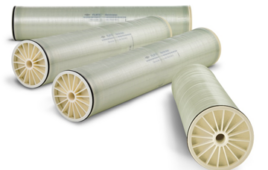 On Jan. 25, 2004, NASA’s Mars Exploration Rover Opportunity touched down on the Red Planet. It was considered a “hole-in-one” landing, as the rover came to rest inside the 72-ft diameter Eagle Crater. Equipped with powerful tools, the rover was tasked with studying the Martian environment for any clues from previous water activity. Initially, Opportunity was designed for a 90 Sol (Martian day) mission.
On Jan. 25, 2004, NASA’s Mars Exploration Rover Opportunity touched down on the Red Planet. It was considered a “hole-in-one” landing, as the rover came to rest inside the 72-ft diameter Eagle Crater. Equipped with powerful tools, the rover was tasked with studying the Martian environment for any clues from previous water activity. Initially, Opportunity was designed for a 90 Sol (Martian day) mission.
Today, the rover is still kicking and toiling on the Martian surface. Recently, it just finished working through the planet’s lowest solar-energy days.
“Opportunity has stayed very active this winter, in part because the solar arrays have been much cleaner than in the past few winters,” said John Callas, the Mars Exploration Rover project manager.
After Opportunity’s landing, the rover explored several other craters located in Eagle Crater’s vicinity. The rover found evidence of minerals, such as sulfites and jarosite, and chemicals like chlorine and bromine. All of which require interactions with water to produce. According to NASA, the evidence suggests that where Opportunity touched down was formerly the shoreline of a salty sea.
Though it’s passed its 12-year anniversary, the Opportunity has only spent seven winter seasons on Mars. A year on Mars is roughly 1.9 years on Earth. However, like Earth, Mars has a tilted north-south spin axis, giving the planet winter and summer seasons. But the seasons are about twice as long as Earth’s.
The Opportunity’s solar panels are generating more than 460 watt-hours per day, up nearly 40% more than was seen earlier this Martian winter. All the while, Opportunity has been driving and rock-grinding.
During the rover’s first winter, power generation was below 300 watt-hours and the vehicle refrained from driving and grinding operations for over four months.
“With healthy power levels, we are looking forward to completing the work in Marathon Valley this year and continuing onward,” said Callas.
Currently, Opportunity is examining rocks on the western rim of the Endeavour Crater, which is around 14-mi wide. The area is known as Marathon Valley. Previous observations from NASA’s Mars Reconnaissance Orbiter have indicated the valley is home to clay minerals, which would have formed under wet, non-acidic conditions. Recently, Opportunity collected surface crust from a rock target known by the rover team as “Private John Potts.”




